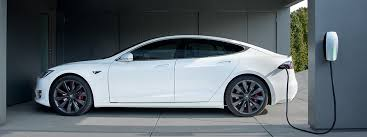In 2023, electric vehicles (EVs) are more than just a futuristic concept—they are a tangible reality revolutionizing our roads. According to Bloomberg Green, global EV sales surged by over 40% in the first half of the year alone. This growth is fueled not only by technological advancements and environmental consciousness but also by game-changing EV incentives designed to make electric cars more accessible and affordable. In this article, we will explore how these incentives are transforming the EV landscape and what this means for your wallet.
Government Incentives: Powering the EV Surge
Federal Incentives and Tax Credits
One of the most significant drivers of EV adoption is government incentives. In the United States, the Inflation Reduction Act has extended tax credits up to $7,500 for qualifying electric vehicles. This credit applies to new EVs and some plug-in hybrids, making them financially attractive. Similarly, Germany offers subsidies up to €9,000, propelling it to the top of European EV markets.
State and Local Incentives
Beyond federal support, many states and municipalities offer additional incentives. For instance, California provides rebates up to $4,500 and access to carpool lanes—an enticing perk for daily commuters. Meanwhile, Norway, a global leader in EV adoption, exempts EVs from hefty import taxes and registration fees, leading to over 80% of new car sales being electric in 2023, as reported by Reuters Mobility.
International Incentives
Countries like China and India are also stepping up, with China extending its NEV (New Energy Vehicle) subsidies to bolster domestic sales, and India offering tax exemptions and subsidies to reduce reliance on fossil fuels. These initiatives are crucial as they enable a broader adoption of electric vehicles worldwide, making them more affordable and mainstream.
The True Cost of Owning an EV: Savings and Expenses
Lower Operating Costs
One of the most compelling arguments for switching to an EV is the reduced operating cost. According to CleanTechnica, EV owners can save up to 50% on maintenance compared to traditional gas vehicles. This is because EVs have fewer moving parts, eliminating the need for oil changes, exhaust repairs, and other engine-related maintenance.
Charging vs. Fueling
Charging an EV is generally cheaper than refueling a gasoline car. With home charging options, you can take advantage of lower electricity rates during off-peak hours. Public charging stations are also increasing, with Volkswagen and Tesla expanding their networks globally, ensuring that range anxiety becomes a thing of the past.
Insurance and Depreciation
While EV insurance can be slightly higher due to the cost of specialized repairs, many insurers are now offering discounts for EVs due to their lower accident rates and environmental benefits. Furthermore, as EV technology matures, depreciation rates are stabilizing, making them a worthwhile long-term investment.
Practical Tips: Making the Most of EV Incentives
How to Choose the Right EV
- Research Eligible Models: Not all EVs qualify for incentives. Check government websites or consult dealerships to confirm which models are eligible.
- Consider Your Driving Needs: Evaluate your daily mileage and charging options. Brands like Tesla and Hyundai offer models with varied ranges to suit different needs.
- Compare Total Ownership Costs: Factor in insurance, maintenance, and charging costs to understand your true savings.
Where to Buy and What to Compare
- Dealerships vs. Online: While traditional dealerships offer face-to-face service, online platforms like Tesla’s direct sales provide convenience and often better deals.
- New vs. Used EVs: New models come with the latest tech and incentives, but used EVs can offer significant savings with still-viable battery life.
Maximizing Incentives
- Stay Informed: Incentive programs and eligibility criteria can change. Regularly check sources like Electrek and InsideEVs for updates.
- Plan Your Purchase: Time your purchase to coincide with incentive announcements or program renewals for maximum benefit.
The Future of EV Incentives and Your Wallet
As we move forward, EV incentives are likely to evolve, focusing more on sustainable energy integration, such as home solar panel installations that complement EV charging. According to the International Energy Agency, the shift towards renewable energy will further lower the cost of owning an EV, making them an even more attractive option for consumers.
In conclusion, 2023’s EV incentives are a game-changer, making electric vehicles accessible to a broader audience and significantly impacting your wallet by lowering ownership costs. Whether you are considering your first EV or looking to upgrade, now is the time to capitalize on these incentives. As the market grows and technology advances, EVs are not just a part of the future—they are the present. Are you ready to make the switch and drive into a sustainable future?

